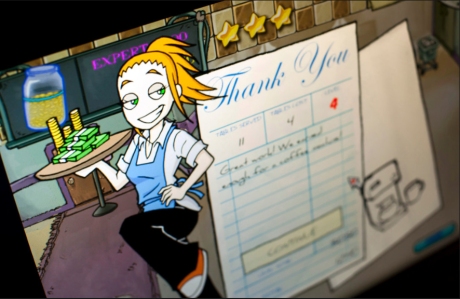
As a follow up to my Manifesto for a Ludic Century, journalist Heather Chaplin posted an article on Kotaku that included many great reactions to the piece, from Frank Lantz’s poetic game narrative to Ian Bogost’s cutting criticism, and other wonderful responses from Leigh Alexander, Robin Hunike, and Tracy Fullerton.
The article is also getting responses across the web, both laudatory and critical. (Of course the critical reactions are the ones that excite me the most.) Perhaps the most detailed answer comes from the sweet and brilliant David Kanaga, a game developer known for his work on Proteus and Dyad. Reading the manifesto line by line, David argues for less of an emphasis on systems and design and more of an emphasis on play. My own feeling is that the deeply paradoxical interdependence of rules and play is one of the great mysteries that we explore every time we play a game.
Not to be outdone by my own critics, I of course have my own misgivings about the manifesto to articulate. Below is a summary of my primary beefs with the essay.
- It is incredibly self-serving. In the future, games will be the central force in culture, and everyone will be a game designer. Is it really hard to believe that this was written by… a game designer? I do believe in the underlying concepts and predictions of the manifesto, but I think that they are likely to manifest in ways that are stranger than we might be able to imagine in our present moment. One can only hope that the future surprises us – perhaps the ludic century won’t end up being about “games” as we know them at all.
- It is so damn happy. I love games, and I think the manifesto captures my joy in playing them, designing them, and understanding how they fit into culture at large. However, the last thing I’d ever want to be is a cheerleader, and the manifesto might err on the side of being too cheery about games. It’s at least as important that we be hard on games – as critical about them as possible. Loving games should make you a snob, not a cheerleader. And proper snobs are full of hate about what they love.
- It is a manifesto. This means it is meant to be short and digestible. And any time complex ideas get summarized, they lose subtlety. So I’m definitely trading in nuance for bombast. In addition, calling anything a “manifesto” these days is a bit like historical cosplay – dressing up in the garb of an earlier era. So I embrace the form of the 20th Century manifesto with full earnestness and irony. That’s one way in which the essay is intended to be playful.
Thanks again to all of my critics. Special gratitude to Heather Chaplin for her generous (and often critical) writing that framed the original article and the follow-up response. Huge thanks to Kotaku Features Editor Kirk Hamilton, who put in the work with Heather to plan and curate the articles that gave the manifesto such a great platform. And thanks to Kotaku Editor-in-Chief Stephen Totillo for seeing the potential in the first place.




